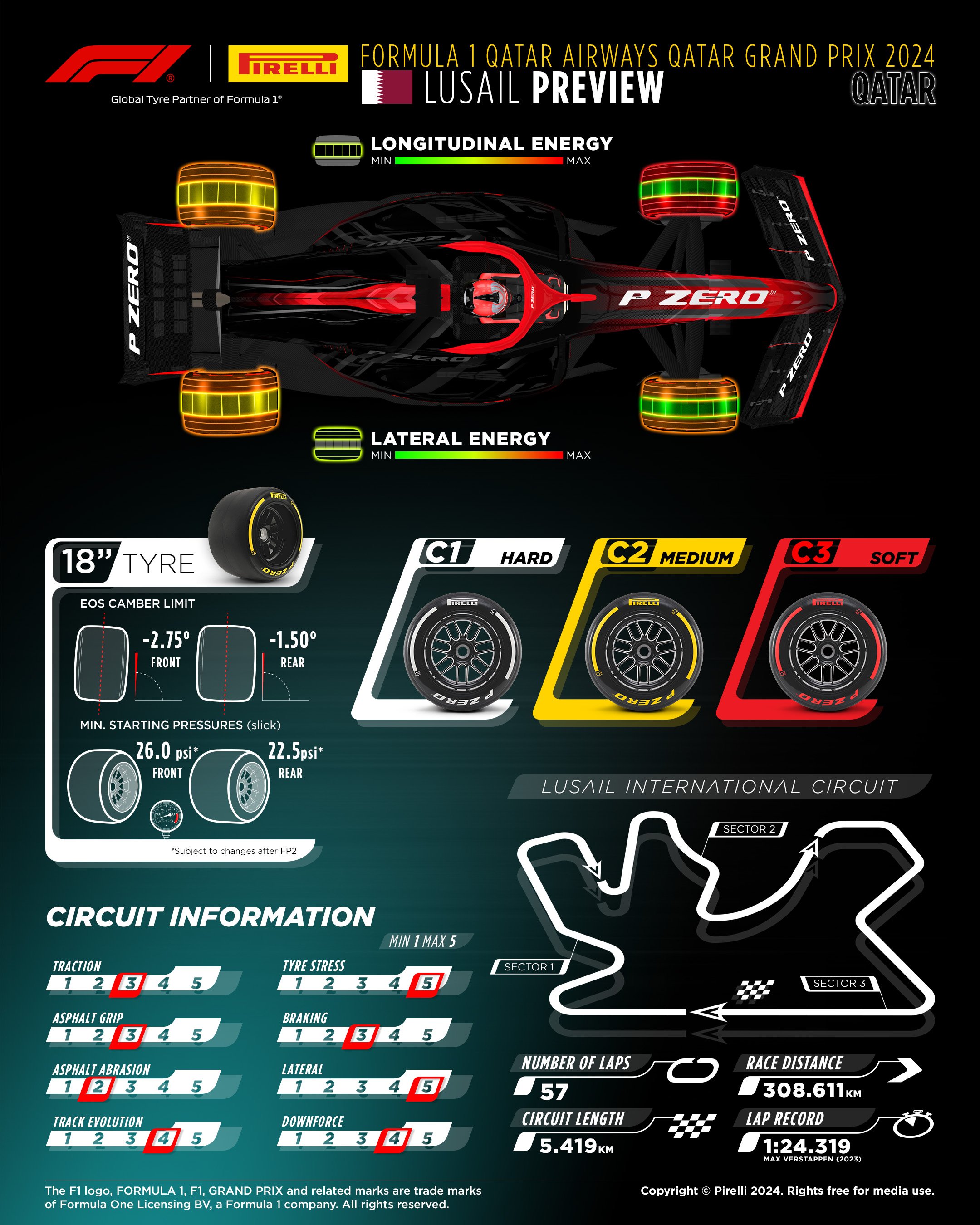dia6olo wrote: ↑27 Nov 2024, 14:22
venkyhere wrote: ↑25 Nov 2024, 15:20
SirBastianVettel wrote: ↑25 Nov 2024, 11:43
I heard a lot of people saying that Ferrari will struggle in Qatar. Why is that?
General perception is that Ferrari's strength is slow speed rotation and traction, plus straights. The Qatar track doesn't have many of those.
Lots of long radius corners, where 'driver skill' will make it's presence felt. In fact, apart from T6 (slow hairpin), all of them are long radius corners, medium speed and high speed. Sector3 has all of the high speed corners (T12-T16) and Sector1 and Sector2 have all of the medium speed corners (T1 to T10, except T6). McLaren will be mega in Sectors 1 and 2 and Redbull (if they get the car right) has an advantage in Sector 3.
It's a proper 'drivers track' like Brazil, Suzuka etc, very flowing. No jerks.
Am I missing something?
Car strength and weaknesses aside, to me a driver's skill makes its presence felt in the slow corners, were a chunk of time can be gained/lost.
I don't really see the driver skill in the long radios corners, that's surely mostly down to the car...
I see it the other way around :
In slow corners, making tradeoffs like braking late and rotating at the apex (gaining time on entry, losing time on exit) v/s braking early and rotating before the apex (losing time on entry, gaining time on exit) is far easier and choosable, based on doing one FP lap one way and doing the other FP lap the other way or doing one thing with fresh tires and doing the other when tyres are worn, etc etc... this is something that is part of the basic repertoire of any F1 driver. Things are happening much slower, so the driver has the 'time' to accurately 'pin down' his adjusted driving style. Because, depending upon the inherent nature of the track (whether there is a long straight before or after this slow corner) or the car or the state of tyres, any of these two styles can be the better option to minimize laptime.
In fast long radius corners, this kind of tradeoff is much harder to execute, because there isn't much role played by brakes, but rather from the 'lateral loading' of the tyres dependent on speed and steering angle. Just 1 degree change in angle of the steering can be the difference between 0.05s gained or lost through a high speed corner, as it will impact not only the line taken to the next bit of the road (which will eventually influence that upcoming corner as well) but also influence the tyre wear. With long radius med/high speed corners usually being a wide bit of track, without any clear 'this is the apex point', it's not easy to 'pin down' the line through here. The car isn't going to be 'rotating uniformly' throughout the corner, it's going to rotate more for some duration, and rotate less for some duration of time, in between two straight portions of time. Only the truly skilled F1 drivers choose the 'most optimal' line through such corners, such that for the duration that the car remains with steering 'turned' in the corner :
a) the 'rotation more' duration is minimized
b) the 'rotation less' duration is maximized
so that the car carries as high straightline speed at the exit of the corner.
And all this is dependent on the 'attitude' of the car, w.r.t lateral and longitudinal loading, controlled via steering/throttle/brakes,
This is something very subtle and not necessarily revealed by the TV telecast graphic showing 'braking' 'minimum speed' 'throttle' plots (driverX is 0.15s slower than driverY) on the screem, when they want to inform us viewers about 'where is driverX losing time'. Minimum speed doesn't matter, what matters is 'duration' and 'exit speed' through the corner. Classic examples of such corners are the double-apex right handler / long U-turn at Canada, same thing in Paul Ricard france (forgot the names for these), Pouhon in Spa, 130R in Suzuka, Curva Grande and Parabolica from Monza, etc etc.
Of course the car is the main determinant, but if two cars have very similar high speed aero grip balance (for example Mclaren v Redbull or McLaren v McLaren) at 250kph, the skill difference b/w drivers can ensure there is a gain/loss of 0.05s-0.1s
as well as less usage of tyres through the same corner, and at the same time it will setup the car to gain more time in the next upcoming corner as well.

